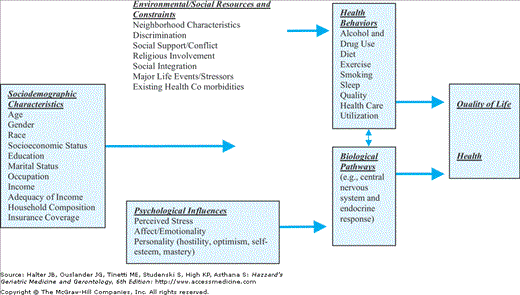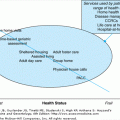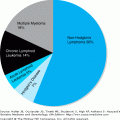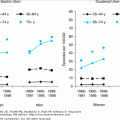Psychosocial Aspects of Aging: Introduction
Understanding the role of psychosocial factors in late life requires a high-altitude view of human development to identify the basic biological and social forces that fundamentally shape the development of the person and the ways in which they respond to life challenges. These forces are typically viewed as constraints and can be briefly summarized in four propositions.
Biological development follows a sequential pattern. Although there is considerable interindividual variability in biological development, the overall biological resources across the life span resemble an inverted U-function. During childhood and adolescence, cognitive and physical abilities increase and provide the basis for the development of complex motor and cognitive skills. Physical development plateaus during early adulthood and then later declines. In old age, declines in both physical and cognitive functioning are evident.
Societies impose age-graded sociostructural constraints on development. Life span psychologists and life course sociologists emphasize that all societies can be characterized as having age-graded systems, which constrain and provide a scaffold for life course patterns. These patterns provide predictability and structure at both individual and societal levels. A prototypical case is childbearing in women, which is shaped by both social institutions and biological constraints.
Life is finite. Whatever is to be achieved or experienced in life has to be done in a limited period of time, typically less than 80 years. At any given point in an individual’s life, the anticipated amount of time left to live may shape behavior and affect in important ways.
Genetic endowment is a limiting factor on the biological and behavioral functioning of the individual. Although the potential behavioral repertoire of humans is vast, the capacity to achieve extraordinary levels of functioning in a given domain is often constrained by the genetic makeup of the individual.
This view of development emphasizes that accumulated resilience or adaptive capacity of individuals will vary as function of the individual’s location in the life course. For example, the biological and physical reserves of an individual will generally be greater for persons in young adulthood than for persons in old age. Conversely, behavioral resources and psychological reserves may be greater at older ages because of accumulated life experiences, acquisition of skills, and increased knowledge. In addition, a given stressor will likely activate different psychological and behavioral processes in varying intensities as a function of the individual’s location in the life course. Finally, because of fundamental changes in age-related biological functioning, the type and intensity of biological pathways activated by stressful encounters as well as the manifestation of overt disease will vary substantially as a function of the individual’s location in the life course.
Psychosocial Factors, Health, and Quality of Life
The number of topics that could legitimately be included in a discussion of psychosocial aspects of aging is vast. Work, retirement, migration, sexuality, stress, widowhood, emotionality, mental health, social support, and friendship are just a few of the domains that might be discussed within a psychosocial framework, and many of these topics are covered in other chapters of this book. The focus here is on psychosocial factors linked to health and quality of life. A broad conceptual framework identifying key psychosocial factors is presented in Figure 7-1. At the far left, the model identifies a broad array of sociodemographic characteristics, which directly and indirectly shape individual development, quality of life, and health throughout the life course. For example, many of the health disparities in our society have been linked to socioeconomic status, race, and gender. Environmental and social resources and constraints include multiple indicators known to affect health outcomes, including physical and social characteristics of the environment people live in. Discrimination, negative life events, and existing comorbidities can be major sources of constraint, while religious involvement and social support are often important protective resources (Figure 7-1).
Psychological influences include both positive and negative factors, including optimism, self-esteem, mastery, and control. Negative affect, such as depressive symptoms and perceived stress, affect health through their impact on behaviors and through biological pathways. The effects of psychological and social/environmental factors on health are often mediated through health behaviors and through biological pathways such as the central nervous system and endocrine response. Although there is still considerable debate regarding the causal links between these groups of variables, there is strong consensus that they are important contributors to health and quality of life. A detailed review of all of the variables identified within this model is beyond the scope of this chapter and would be redundant with other chapters in this volume. Thus, the goal here is to highlight core psychosocial factors and mechanisms linked to health and well-being. Specifically, the discussion that follows focuses on four psychosocial domains—social relationships, stress, personality and affect, and quality of life—that are critical to understanding aging and health.
Social Relationships
Maintaining social relationships is critical to promoting psychological and physical well-being in late life. Involvement in satisfying social relationships has been linked to decreased risk of cardiovascular disease, functional decline, and mortality. Social interactions and companionship also contribute to emotional well-being, life satisfaction, and happiness. Although the impact of social relationships on well-being is predominantly positive, there are circumstances when social relationships can be detrimental to the older individual. Thus, there is interest in determining which aspects of social relationships are beneficial (and which are not) as well as the specific mechanisms by which they contribute to positive or negative health outcomes.
Three aspects of social relationships are typically identified: (1) structural support, often referred to as social integration or social connectedness, focuses on the quantity and types of social ties an individual has, (2) social support refers to the tangible or intangible benefits that people receive through social ties, and (3) negative support refers to the detrimental effects of social relationships.
Structural support is typically measured by counting the number and types (e.g., spouse, partner, friend, church member) of individuals in one’s social network as well as the frequency of contact between members of the network. Numerous studies have shown that older individuals with more network ties are less likely to develop cognitive and physical disability, after controlling for baseline health and functional status characteristics. Other studies have shown slower rates of decline in functioning as well as longer survival among individuals with larger social networks and more frequent contact with network members. Put another way, low levels of social integration (i.e., social isolation) are a major risk factor for mortality, independent of traditional biomedical and other behavioral risk factors. The mechanisms responsible for the beneficial health effects of social integration have not been definitively established. Candidate mechanisms include improved health behaviors resulting from the positive influence of friends and relatives, reduced exposure to external stressors, a stronger sense of coherence and self-esteem, and improved biological resilience.
Social support typically identifies perceived support and received support, including four different types of support provided. Perceived support is the perception that support is available if needed, and received support refers to support that has actually been provided. The four types of support are as follows: (1) instrumental support, which refers to tangible goods and services such as financial assistance, help with self-care tasks; (2) informational support, which is defined as the provision of advice, information on how to solve problems, or guidance; (3) emotional support, which includes the provision of love, caring, and other positive feelings; and (4) appraisal support, which includes feedback given to help individuals evaluate themselves or a particular situation they may be struggling with. Although distinctions among the last three types of support are sometimes difficult to make in practice, they are useful in helping to understand what types of support are more or less beneficial under what circumstances. For example, emotional support has been shown to be particularly beneficial to promoting psychological well-being and cognitive and physical functioning. A number of mechanisms have been proposed to explain the beneficial effects of support including provision of needed material resources and services (instrumental support), reduction of the perceived severity of life stressors (appraisal support), or improvement of coping skills (informational or emotional support).
On the whole, the benefits of social relationships far outweigh their occasional detrimental effects. Nevertheless, interactions with network members are not always positive and may include criticism, neglect, demands, and other insensitive behaviors that negatively affect health and well-being. At the extreme, close network members may abuse their elderly relative with threats, economic exploitation, or physical harm. Close friends and relatives may also provide support that is well-intentioned but backfires, resulting in worse, rather than better, health outcomes. For example, receiving help with self-care tasks has been linked to disability onset and progression among originally high functioning older adults. Network members who are overprotective and provide too much support may foster dependency in older adults, leading to reduced physical activity and accelerated physical decline. Overprotection may also erode an older adult’s confidence in being able to care for oneself, threaten feelings of autonomy, independence, and overall well-being.
Despite the potential for detrimental effects of social relationships, satisfaction with social relationships tends to be high in late life, even though social networks become somewhat smaller, and interactions with network members become less frequent. One reason is that older adults manage their social relationships to maximize positive support and companionship, and minimize relationships that are conflictual and difficult.
Stress and Distress
Stress is the nonspecific result of a demand upon the body. It is a common pathway for a variety of physical, cognitive, and emotional challenges. The stressed person will experience adverse physiologic effects (primarily in the pituitary–adrenal axis and immune system) but also clinically appreciable effects on decision-making, problem-solving, vigilance, social inference, and perceptual and motor skills. In this case, stress, a normal feature of an individual’s interaction with the environment, becomes distress, prolonged stress that overwhelms physiologic and psychologic regulatory mechanisms. Some research suggests that prolonged stress may even affect the rate of aging, as measured by telomeric shortening over successive cell replication cycles.








